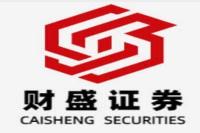Unlocking the Future: A Deep Dive into China's Booming Nuclear Fusion Industry
Meta Description: Explore China's burgeoning nuclear fusion industry, discover key players like Shanghai Electric, analyze investment trends, and understand the potential impact of this revolutionary technology. #NuclearFusion #China #CleanEnergy #Investment #Technology
Wow! The recent surge in interest surrounding nuclear fusion in China has been nothing short of electrifying! Imagine a world powered by a virtually limitless, clean energy source – that's the promise of nuclear fusion. It's no longer a science fiction dream; it's rapidly becoming a tangible reality, and China is at the forefront of this revolutionary technological leap. This isn't just another market trend; it's a potential paradigm shift with implications for global energy security, economic growth, and environmental sustainability. We're not just talking about incremental improvements; we're discussing a game-changer that could redefine our energy future. This article dives deep into the heart of China's nuclear fusion push, examining the key players, the massive investments pouring in, and the exciting technological advancements shaping this groundbreaking industry. This isn't just a story about stocks and profits; it's a story about innovation, ambition, and the quest for a cleaner, brighter future. Get ready to be amazed by the sheer scale and potential of this incredible endeavor! Prepare to be blown away by the incredible pace of innovation and the sheer scale of this ambitious project, as we uncover the nuts and bolts of this exciting new era in energy technology. Buckle up, because this is one wild ride!
Key Players in China's Nuclear Fusion Race
China's ambitious pursuit of nuclear fusion isn't a solo effort; it's a collaborative endeavor involving a diverse range of state-owned enterprises (SOEs), research institutions, and private companies. This collaborative approach is crucial, bringing together expertise in diverse fields – from materials science and superconductivity to advanced manufacturing and engineering.
Think of it like assembling an all-star team for the ultimate energy championship. Each player brings unique skills and experience to the table, working in perfect harmony to achieve a common goal. Let's meet some of the key players:
-
Shanghai Electric: This giant in the energy sector isn't just talking the talk; they're walking the walk. Their significant investment in Shanghai Future Fusion Energy Technology Co., Ltd. (聚变能源) underscores their commitment to the technology. They've already made substantial contributions to projects like the HH-70 all-high-temperature superconducting tokamak device, showcasing their advanced manufacturing capabilities. Seriously, they’re not messing around!
-
China National Nuclear Corporation (CNNC): A veteran in the nuclear energy field, CNNC brings decades of experience and a deep understanding of nuclear technologies to the fusion table. Their expertise in handling radioactive materials and managing complex large-scale projects is invaluable.
-
Chinese Academy of Sciences (CAS): The brains of the operation! CAS’s numerous research institutes, particularly the Institute of Plasma Physics, are at the cutting edge of fusion research. Their breakthroughs in plasma physics and superconducting materials are driving the technological advancements in this field. These guys are the real deal.
-
Private Investors: Alongside the SOEs, private investment is playing an increasingly important role. Companies like Kunlun Capital's investment in Fusion New Energy (Anhui) Co., Ltd. highlights the growing confidence in the sector's potential for massive returns.
| Company | Role | Key Contribution |
|-----------------|-------------------------------------------|------------------------------------------------------------|
| Shanghai Electric | Leading investor, manufacturer of key components | HH-70 Tokamak device components, BEST project participation |
| CNNC | Expertise in nuclear technology | Experience in large-scale projects, safety protocols |
| CAS | Research and development | Breakthroughs in plasma physics, superconducting materials |
| Kunlun Capital | Private investment | Funding for startups in the nuclear fusion sector |
The collaborative spirit and vast resources pooled together paint a picture of a determined push towards a fusion-powered future.
The Technological Hurdles and Breakthroughs
The path to commercially viable nuclear fusion is paved with significant technological challenges. It’s like climbing Mount Everest – incredibly difficult, but the view from the top is breathtaking.
One major hurdle is achieving and sustaining extremely high temperatures and pressures – we're talking millions of degrees Celsius - necessary for fusion to occur. This necessitates the development of advanced materials capable of withstanding these extreme conditions. Think of it as building a furnace hotter than the sun. Not an easy task!
Another challenge lies in containing the superheated plasma, a state of matter consisting of highly charged particles. This requires incredibly powerful magnetic fields generated by sophisticated superconducting magnets. These magnets need to be incredibly precise and powerful to keep the plasma stable.
Despite these challenges, impressive strides have been made:
-
High-Temperature Superconducting Materials: Advancements in superconductors are crucial for creating the powerful and efficient magnetic fields needed to contain the plasma. China’s progress in this area has been quite remarkable.
-
Plasma Confinement: Researchers have made significant progress in developing techniques to confine and control the plasma for extended periods.
-
ITER Collaboration: China's participation in the International Thermonuclear Experimental Reactor (ITER) project provides invaluable experience and collaboration opportunities. It’s a global effort to achieve a major scientific and technological milestone.
These advancements, coupled with ongoing research and development, are gradually paving the way towards achieving sustained nuclear fusion reactions.
Investment and Market Outlook: A Fusion Frenzy
The excitement surrounding nuclear fusion isn't just confined to the lab; it's spreading rapidly throughout the investment world. The potential economic benefits are enormous, attracting significant investment from both state-backed entities and private investors.
Massive investments are pouring into research and development, infrastructure development, and the creation of new companies dedicated to commercializing fusion technology. This is a clear indication of the immense potential the market holds.
Experts predict explosive growth in the coming decades, with the global nuclear fusion market anticipated to reach tens of billions of dollars. The potential for cost-effective, clean energy is too compelling to ignore. This sector is primed for explosive growth.
The commercialization of nuclear fusion technology is still some time away, but the current investment momentum is a strong indicator of future market potential. Smart money is already betting on this game-changing technology.
Frequently Asked Questions (FAQs)
Here are some common questions about China's nuclear fusion initiative answered in a straightforward manner.
Q1: How does nuclear fusion work?
A1: Nuclear fusion is the process of combining lighter atomic nuclei (like isotopes of hydrogen) to form a heavier nucleus (like helium). This process releases tremendous amounts of energy. Think of it like the power source of the sun.
Q2: What are the environmental benefits of nuclear fusion?
A2: Unlike traditional fossil fuels or nuclear fission, nuclear fusion produces virtually no greenhouse gas emissions or long-lived radioactive waste. It’s a clean and sustainable energy source.
Q3: When will nuclear fusion become commercially viable?
A3: While still years away, significant progress is being made. Many experts predict commercial viability within the next few decades, although some remain more cautious.
Q4: What are the risks associated with nuclear fusion?
A4: While generally considered safer than nuclear fission, there are still some technical risks associated with handling high-energy plasmas and managing large-scale fusion reactors. Continuous research and rigorous safety protocols are crucial.
Q5: How does China's investment in nuclear fusion compare to other countries?
A5: China has made significant investments, positioning itself as a global leader in the field. Its commitment to research and development is certainly notable when compared to other global powerhouses in this area.
Q6: What are the potential economic impacts of a successful fusion reactor?
A6: A successful fusion reactor would revolutionize the energy sector, creating new industries, jobs, and economic opportunities, potentially reshaping the global energy landscape.
Conclusion: A Bright, Fusion-Powered Future
China's unwavering commitment to nuclear fusion is a bold and visionary undertaking. The challenges are immense, but the potential rewards – a clean, abundant, and sustainable energy source – are even greater. The current momentum, marked by substantial investment, technological breakthroughs, and international collaboration, suggests a bright future powered by the sun's energy, here on Earth. This isn't just a technological race; it's a race toward a better future for humankind. The journey may be long, but the destination promises a world transformed by clean, limitless energy. The future is fusion, and China is leading the charge!



